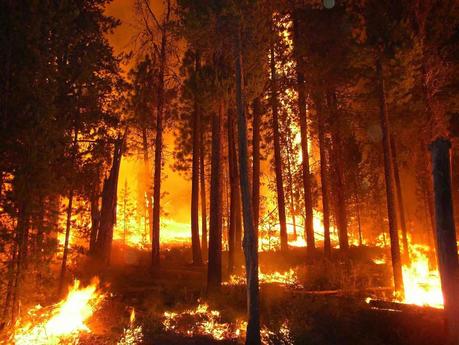From the National Wildlife Federation

The frequency of large wildfires and the total area burned have been steadily increasing in the Western United States, with global warming being a major contributing factor.
- Longer fire seasons will result as spring runoff occurs earlier, summer heat builds up more quickly, and warm conditions extend further into fall. Western forests typically become combustible within a month of when snowmelt finishes. Snowpack is now melting 1 to 4 weeks earlier than it did 50 years ago.
- Drier conditions will increase the probability of fire occurrence. Summertime temperatures in western North America are projected to be 3.6 to 9 degrees Fahrenheit higher by mid-century, enhancing evaporation rates, while precipitation is expected to decrease by up to 15 percent. The Southwest will be hit particularly hard, perhaps shifting to a more arid climate.
- More fuel for forest fires will become available because warmer and drier conditions are conducive to widespread beetle and other insect infestations, resulting in broad ranges of dead and highly combustible trees. Higher temperatures enhance winter survival of mountain pine beetles and allow for a more rapid lifecycle. At the same time, moderate drought conditions for a year or longer can weaken trees, allowing bark beetles to overcome the trees’ defense mechanisms more easily.
- Increased frequency of lightning is expected as thunderstorms become more severe. In the western United States a 1.8 degree Fahrenheit increase in temperature is expected to lead to a 6 percent increase in lightning. This means that lightning in the region could increase by 12 to 30 percent by mid-century.

